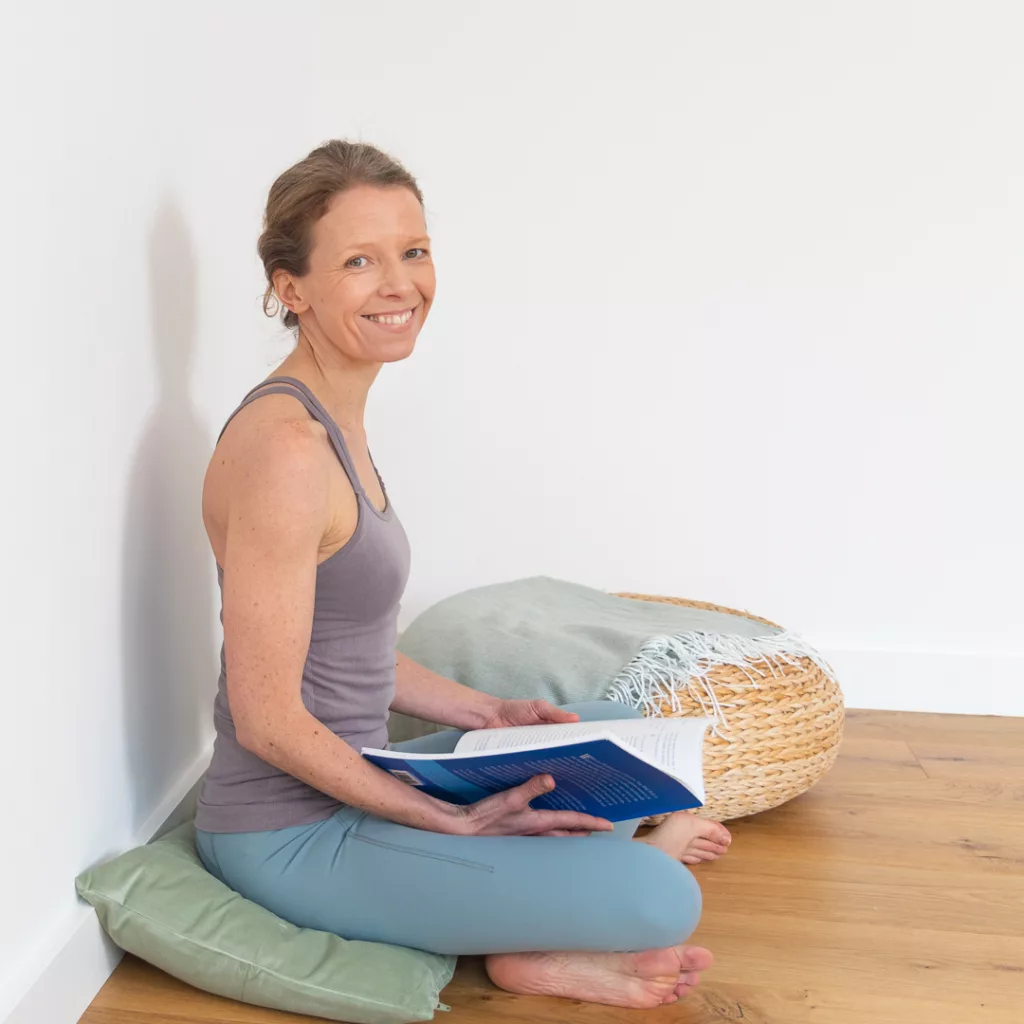
Yoga to support Women’s Health
Yoga for Women’s Health Workshops
Sign up to the newsletter to be kept up to date with the next workshop.
Online Course: Yoga for Menopause to Support Health and Wellbeing
This comprehensive online course, Yoga for Menopause, has been designed by Sam, Menopause Specialist Doctor, and Yoga Teacher, to guide and support you through the physical and emotional changes from perimenopause to postmenopause.
What You Can Expect
- Yoga for Menopause Asana Practices: Tailored to support strength, flexibility, sleep, anxiety, and pelvic floor health, with practices chosen specifically for this stage of life.
- Yoga for Menopause Restorative Sessions & Breathwork: Deep relaxation practices and breathing techniques to calm your body and mind, promoting restful sleep and overall wellbeing.
- Expert Insights: Video talks with Sam offering valuable advice on how to embrace a holistic approach and improve your health and wellbeing during menopause and beyond.
What’s Included in the Yoga for Menopause Course:
- 3 Months of Access: Get full access to this comprehensive yoga for menopause course for £100. The course is pre-recorded, so you can practice at any time that suits you, and watch the videos over and over again.
- 6-Week Programme: Each week focuses on a different theme, with over 9 hours of varied content:
- Longer & Shorter Movement Practices
- Breath Practices including breath awareness, box breathing and longer exhalations 4-7-8
- Yoga Nidra, Guided Meditation and Body Scan practices included
- Expert Talks from Sam, guiding you through some of the most common challenges of menopause and offering helpful strategies for thriving during this transformative time.
The Yoga for Menopause Course is suitable for all who are interested in exploring yoga as a way of supporting themselves, including those completely new to yoga.
If you can get up and down from the floor this course is for you. You don’t need to be a particular size, be bendy, or have any specialist clothes or kit to try Yoga for Menopause.
Take the next step in supporting your health and wellbeing during menopause and beyond. Join this holistic course and discover how yoga for menopause could help you feel your best.
“Sam is an amazing yoga teacher, I love coming to her classes to learn more about my body and myself. She is able to convey her wealth of knowledge in a way that feels inclusive, safe and fun! I would highly recommend Sam’s yoga classes.”
“I loved attending Sam’s class so much. Her kind, gentle nature shines through which helped me feel completely safe and held in her class. Sam’s vast knowledge complements her classes and I’m so grateful to have been able to attend. I would recommend Sam to anyone!”
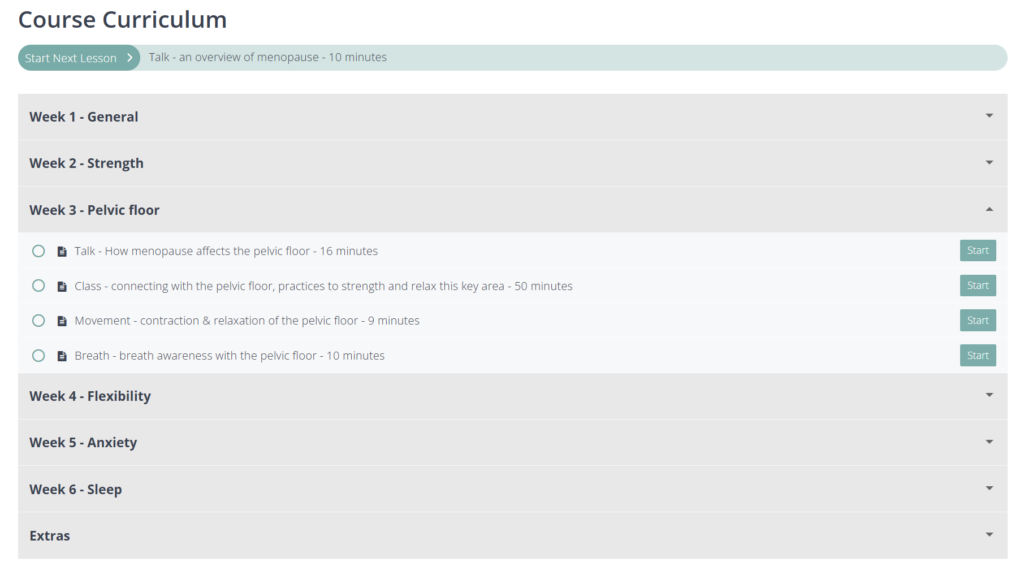
What’s the evidence for yoga to support health & wellbeing at menopause?
Lifestyle and environment can alter the expression of genes (switching them on or off) and increase long-term inflammation, which can in turn increase the risk of developing many non-communicable diseases, such as dementia, cardiovascular disease, and cerebrovascular disease (stroke). Causes of inflammation include inactivity, obesity, gut dysbiosis, poor nutrition, isolation, stress, poor sleep, and exposure to toxins.
This is of particular importance to women postmenopausally as oestrogen has positive protective effects on inflammation and obesity, gut dysbiosis, stress and sleep. Oestrogen protects women from cardiovascular disease and has positive protective metabolic effects on glucose, cholesterol, blood vessels and blood pressure. So as oestrogen levels fall, postmenopausal women are at increased risk of dementia, cardiovascular disease and cerebrovascular disease (stroke).
Studies have shown that yoga can
- reduce inflammation 1
- improve markers of metabolic health (blood pressure, cholesterol, insulin etc) 2,3
- support sleep and improve mood 4
Yoga can connect us to our bodies and minds, help us be in the moment, and cultivate a sense of ease.
The origins of yoga
Yoga has been around for thousands of years, originating in ancient India. There are lots of definitions, most helpful to me is to do with the idea of union – of the body, mind, and breath. We tend to think of it as making shapes on a mat, to improve our flexibility and build strength, and there’s nothing wrong with that. It didn’t start out like that though, and some would say the purpose of the asana (postures) is to prepare the body and mind for meditation. There are ancient texts which set out the yoga way, that include ethical principles to live by, breath-work and meditation as well as the asana. Adding in the breath work and meditation can certainly make it an even more beneficial practice.
My practice
I came to yoga almost 30 years ago now. I had a dislocated hip as a baby, am hypermobile, and used to have quite a bit of joint pain. I’ve always loved sports but found I had to stop running in my late teens due to lots of pain. I got into cycling which worked for my body but I still found I was in pain after a decent walk. A physio I saw at the time remarked on my flat feet, so I got some orthotics and the pain eased, but at the same time it didn’t feel right to me to just prop my feet up and I looked into other ways of supporting myself.
I tried out lots of yoga classes & teachers in Bristol until I found one I clicked with. The teacher quickly spotted I was quite bendy, and adjusted everything for me, not allowing me to cheat by using my bendiness to make the shape, instead teaching me about approaching the posture slowly from a position of power instead. Suddenly it was a challenge, and I was hooked. She constantly nudged me in class about my feet. A few years went by and I could see the newly developed muscles in my feet, and arches that had appeared, the orthotics went in the cupboard and the pain was gone.
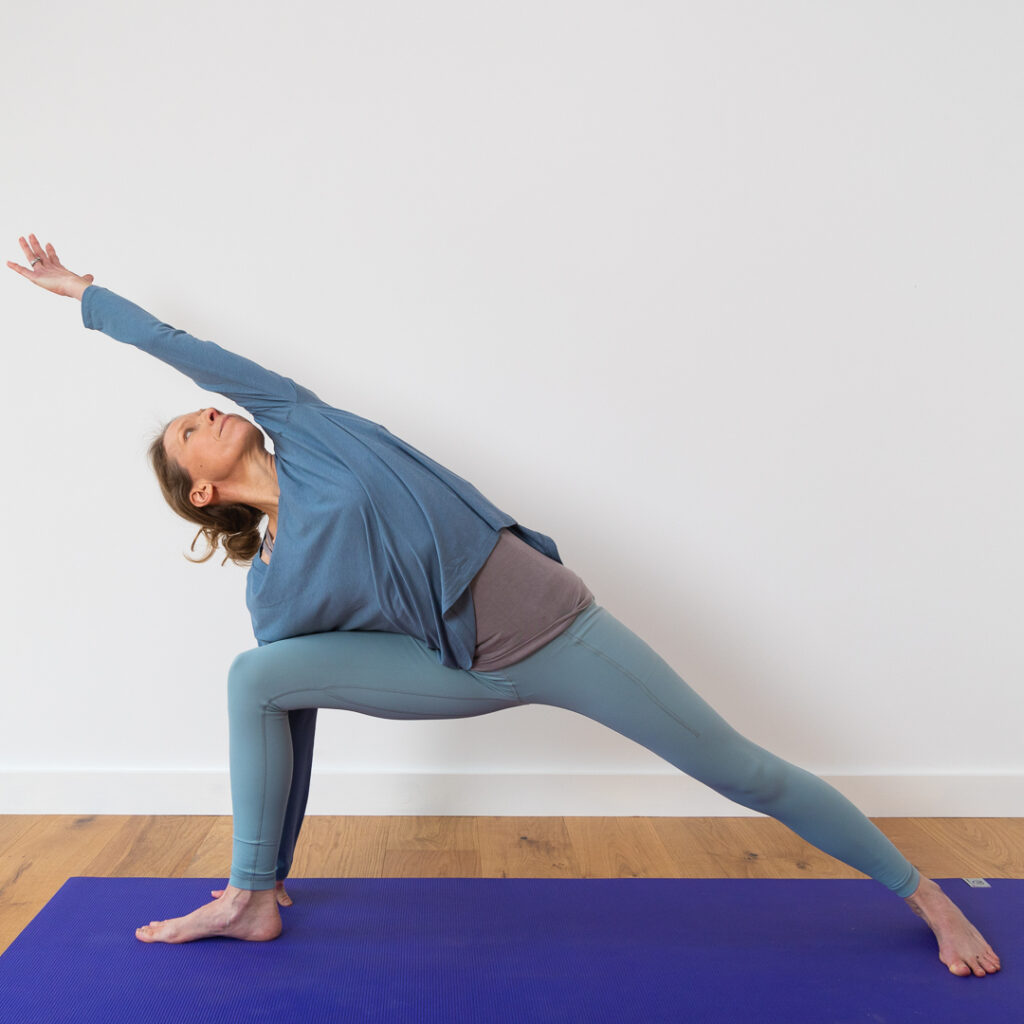
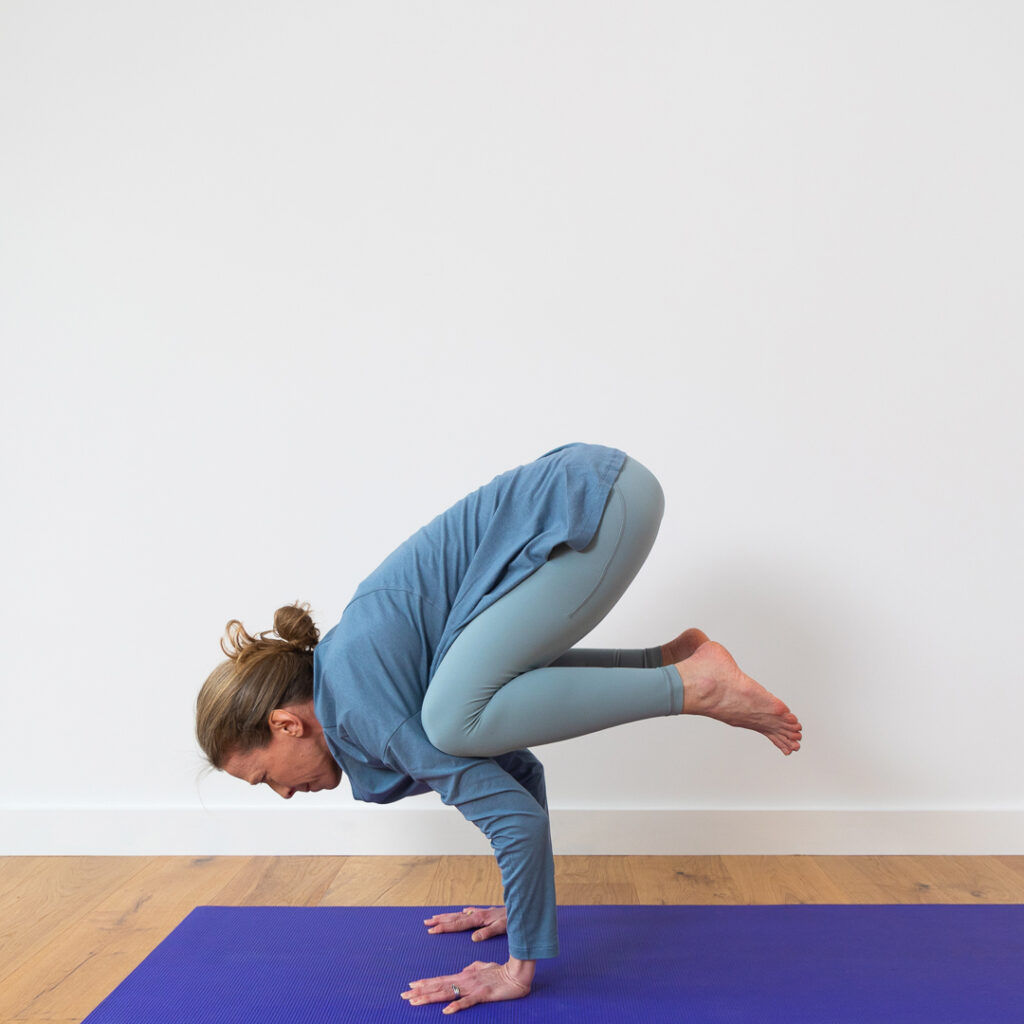
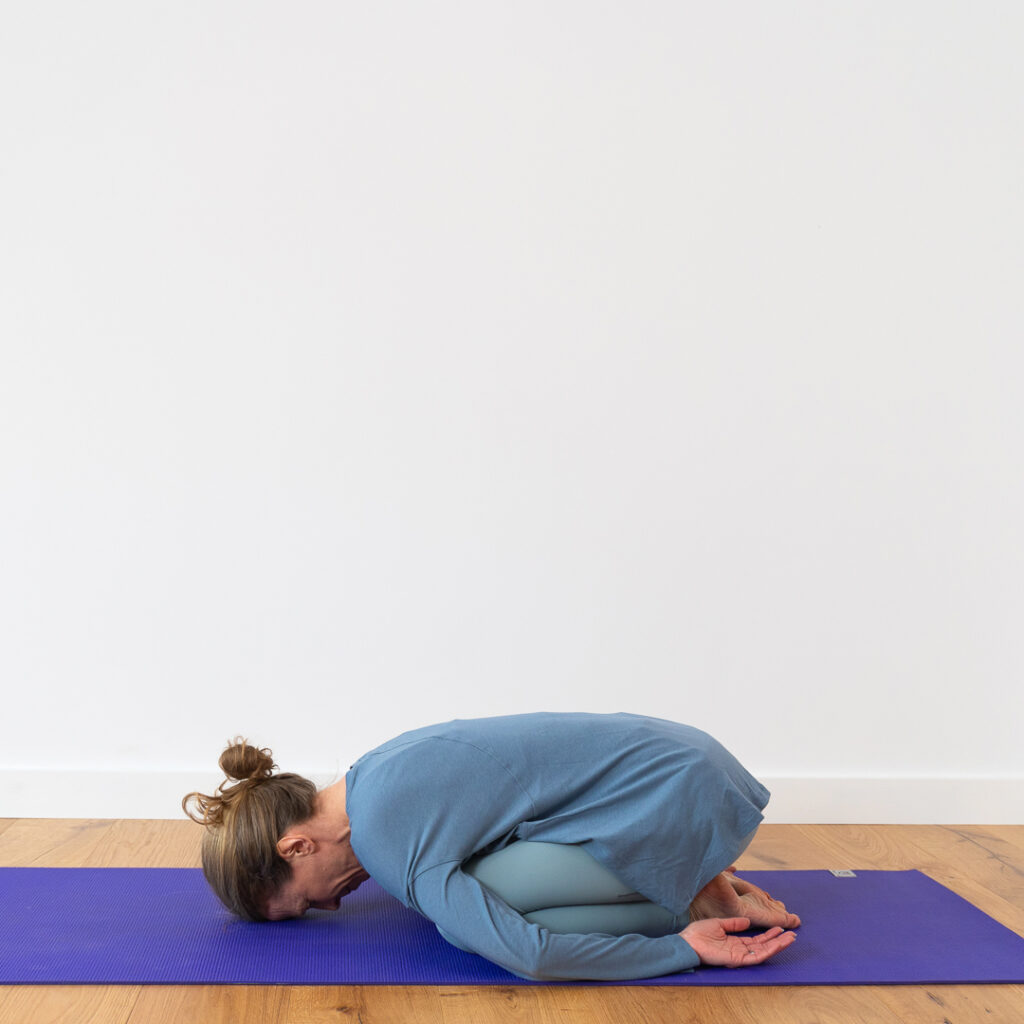
As I’m sure is the case for many, I started a yoga practice looking for physical benefits and challenges and found those, but have stuck with it for all this time because of the psychological benefits I’ve experienced. There’s lots of talk about flow states these days, and yoga for me is one of the best ways of experiencing flow. For me, the magic comes when I’m balancing, and am aware of my breath. You can’t really think about anything else when you’re in a headstand, you have to be mindful! I can still challenge myself and still have some 10-year goals I’ll probably never achieve, but take pleasure in continuing to practice.
I start most days on my mat, even if just for 5 mins. It’s a chance to just be, see what comes to mind, and get ready for the day ahead. It can really help me tune in to what I need – some days I basically just have a lie down and do some breathing practices. Other days I’m doing handstands and jumping about. If you’re practising at home it can be tweaked to suit what you need on any given day. Practicing in a class though can give an amazing sense of connection and a community with like-minded others.
Yoga for Menopause
As part of my teacher training with the Bristol School of Yoga, I researched the evidence for yoga for menopause in supporting health and wellbeing in the postmenopausal years in four key areas – cardiovascular health, bone health, mental health, and pelvic floor dysfunction.
One of the most important benefits for me is to come to rest. At menopause, we are pulled in so many different directions and many of us never stop. We all need rest.
References
1 Impact of Yoga on Inflammatory Biomarkers: A Systematic Review
Dilorom M Djalilova et al. PMID: 30572710.
2 Anthropometric, biochemical and clinical parameters in climacteric yoga practitioners
L A Cota E Souza et al. PMID: 34423699.
3 The effectiveness of yoga in modifying risk factors for cardiovascular disease and metabolic syndrome: A systematic review and meta-analysis of randomised controlled trials
Paula Chu et al. PMID: 25510863.
4 Mind-body therapies for menopausal symptoms: a systematic review
Kim E Innes et al. PMID: 20167444.
